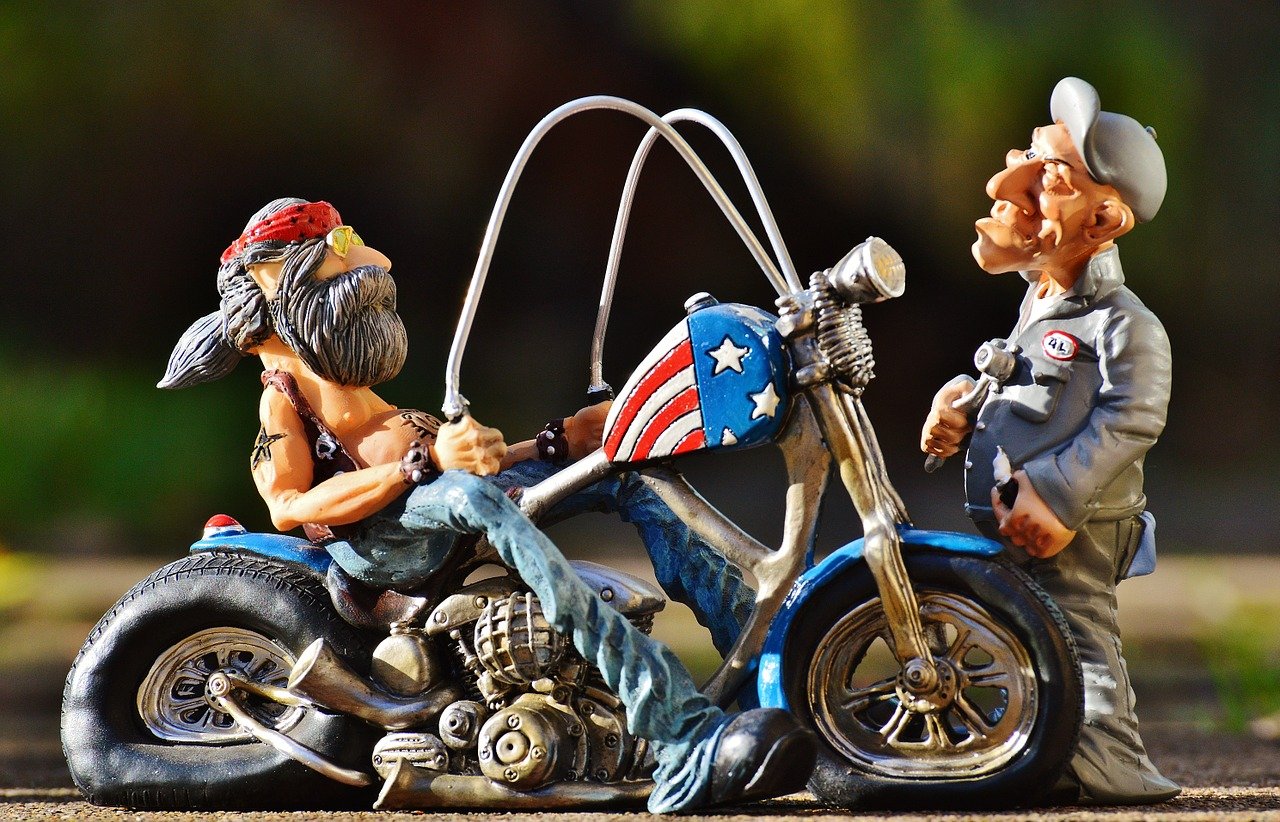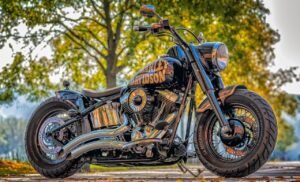How to prepare your motorcycle for the riding season
Updated on | By Mohit Chauhan

Reader Disclosure
Our editorial content is reader-supported. If you click on some of our links, we may earn a small commission. Learn more here.The last trace of snow is already melting, and you can see the gleams of sunshine from across the street. Now is the time to roll out your ‘iron horse’ and embark on an adventure. However, do not rush, as you need to first prepare your motorcycle for the new season, which will save you from unnecessary problems in the future and extend the life of your motorcycle. Besides, it won’t take much of your time, if you had properly winterized your motorcycle.
So before you jingle your keys and squeeze out the clutch after a long winter, your motorcycle should be thoroughly inspected and serviced. Let’s find out what needs to be analyzed for proper maintenance and how to get your bike ready for the post-winter season.
Preparing the motorcycle for the first start: Visual Inspection
- The first thing before you turn on the ignition is to inspect the engine of your motorcycle. To do this, start by visual inspection to notice anything abrupt. Check for possible leaks (drip stains), inspect the presence of antifreeze (not only in the tank, but also in the radiator) and, if necessary, add more.
- Do not forget about the level of oil that could have leaked, if necessary, top up or make a complete change of the fluid.
- Check the gas tank; experienced motorcyclists, before the end of the season, fill their tank with high-octane fuel (91-94) and leave their bike until spring. These measures help prevent the appearance of rust on the inner walls of the gas tank. But if you are wondering why we need to put high octane fuel in the tank; it’s because ordinary fuel begins to lose its properties and performance. So, fuel with an octane rating of 98 gradually reduces to 95 or 92, while fuel with an octane rating of 92 may simply not ignite from a spark.
- Now recall if you had any problems related to spark plug in the previous season, if yes, it is recommended to replace the old plug with new ones.
Replacing spark plugs for new season
Many beginner riders face problems when it comes to thread tightening, experienced riders are aware about this situation, and how awry this problem can turn.
Excessive tightening can cause the thread to rip off, or in worse case, break the spark plug all together. You will eventually have to cut remove the broken pieces, which is tiring as well as time consuming.
The best way to avoid this situation is to purchase dedicated tools that are meant for this job. A Spark Plug Swivel Socket (click to buy) must be used in order to avoid over tightening of the spark plug which may break its thread. The second and no less necessary tool is a feeler gauge (click to buy) designed to measure the gap on the spark plug.
In the service manual of a motorcycle (a book that is issued when buying a bike with all its technical characteristics and repair rules), you can easily find all the necessary numbers, including the clearance level.
Step by step guide to prepare your motorcycle for the riding season
Winter and early spring for motorcycle owners is a time when there is an opportunity to do the correct and comprehensive preparation for the upcoming motorcycle season, especially for those owners who failed to winterize the motorcycle properly. But before you start preparing your motorcycle for the post-winter season, you need to define a work plan. As in any job, consistency is important. So, to simplify the procedure, let’s inspect and prepare the motorcycle step by step.
Step 1: Inspect the motorcycle
Take the cover off from your bike and walk around in a circles looking for any oil stains or smudge on the ground. If there were no visible signs of leakage at the time of storing, then it is unlikely to leak in the winter, when the motorcycle was stationary.
Now rock the bike so that the stagnant shock absorbers work and drive the oil. Use your hand to touch the shiny parts of the front fork and rear shocks (if available) and check for any oil stains. If they are neat and dry; it’s good news, if not; contact the maintenance.
Look for signs of rats. Sadly, rodents are the realities of underground garages and parking lots. If there are traces, carefully inspect all wiring. A gnawed wire can make your life very difficult and in case of damage, make necessary repairs before connecting the battery.
Step 2: Connect the battery
If in case while storing the motorcycle in winter you forgot to remove the battery from the terminal, then you need to completely charge the battery before connecting it back to the motorcycle. On the other hand, you need to check the charging level for the stored battery as well. But in most cases, it will fire up the motorcycle. Once the engine starts, the motorcycle should be rolled out into the street and allowed to idle for 20-30 minutes. This would be quite enough to invigorate a stagnant battery.
If you have an old carburetor model, then before starting the motorcycle, check whether the gas tank knob is open and pumping the fuel (you don’t need to do this in fuel injected motorcycles).
Step 3: Check tires
The battery is completely charged and the engine is warmed up; now is the time to inspect the tires. A parked motorcycle may often trip when stored in the winter, if this is the case, you need to look for any undercutting along the edge of the rim, leakage from the nipple, or a nail or self-tapping screw sticking out somewhere in the tire. The problem, of course, must be eliminated. Additionally, check the instruction manual of your motorcycle to verify the ideal tire pressure w.r.t your brand.
At the same time, you can assess the condition of the tires as a whole. As a rule, before the season ends, no one changes the tires; everyone tries to ride on the old ones. But when the riding season begins again, it’s time to do it. According to traffic rules, the permissible residual tread depth of a motorcycle tire must be at least 1 mm. Truth be told, this is not even enough. But the main problem of worn-out motorcycle rubber is not even a worn out tread, but a violation of the profile geometry. The tire must be round in cross section! And when its central part is wiped out of the tread, the curve tends to turn into a square or rectangle and becomes noticeable even with the naked eye.
There is no point in talking about cracks, cuts or cords sticking out of the rubber; go straight to the trash heap!
Step 4: Change oil and filters
Now that you are convinced that the wheels are in order, you can take it for a ride, not far, but to the nearest service station or workshop to change the oil. Some riders prefer to do this before storing the motorcycle, but this is an incorrect way. During the winter, the new oil will certainly oxidize and loose some of its beneficial properties. Therefore, it is better to delay the replacement till riding season. Make sure you completely flush the old oil before pouring the new one. While you are at it, a new oil filter will add more value to the engine.
Remember to replace the air filter at the same time. And after removing the old one, be sure to scoop out all the dirt and sand that is accumulated in the air box chamber (the container where it was installed).
Step 5: Check the brakes
It is important to pay attention to the brake fluid level and the condition of the brake pads. Moreover, it is best to check the density of the liquid with a special device. Truth be told, brake fluids are very hygroscopic and absorb moisture very quickly. And the more water in the brake fluid, the lower the boiling point becomes, increasing the chances of failure at times of need.
Advice: Modern motorcycles are equipped with advanced ABS systems. Changing brake fluid on these types is not the easiest of operations, so it is better to entrust it to specialists.
However, the condition of the brake pads can be assessed independently, through naked eye. And do not be alarmed if their thickness is only 2-3 millimeters, as motorcycle brake pads are relatively much thinner when compared with four wheelers.
Step 6: Inspect drive belt / chain
Sagging is a normal phenomenon on a motorcycle equipped with chain. So the first thing when you inspect the chain is to check the tension. A loose chain will come out of the sprocket and may even grind its teeth away.
The sag can be determined manually; all you need to do is lift the chain using your fingers all the way upwards. The height of the lift should not go beyond 3-4 cm, and if it does, you may need to tighten it. This is usually done by moving the rear wheel along the guide slots in the swingarm. Loosen the fasteners and move the wheel back along with the chain. Post which; you will need to tighten the nuts back in the wheel.
Worst case scenario; if there is no space to move the wheel backwards. In this case you will be required to buy a new chain. There are, of course, mechanisms that involve cutting of old chain by a couple of links, but this is a bad move. If the chain has already crossed its maximum threshold, it can break while riding and jam the wheels.
Much the same applies to the drive belt, which is used instead of a chain, for example, in Harley-Davidson motorcycles. The only difference is that its permissible sagging is much less; up to 2 cm.
Step 7: Analyze your ride
Everything is inspected and now you are all set for the new season. However, the analysis is not yet complete, and while riding, you need to notice any abrupt behavior with your motorcycle.
For instance, a dangerous backlash may appear somewhere in the bearings of handle bar, or in the wheels. While storing it in the winter, most likely you would not have noticed it. Moreover, these defects progress slowly and it is quite difficult to feel these changes.
But when you lose the habit of riding while it was stored, the chances of noticing these abrupt changes are high. Listen to your gut; the first five kilometers are the most revealing. If something bothers you, do not blame it on suspiciousness, but be sure to check and establish the reason. Remember that a crumbled bearing may well cost life in an unfavorable set of circumstances.
10 safety checks to do before riding season
1) Before heading to the garage, be sure to bring a charged battery with you (if you removed it after the season). A well-charged working battery should display a charge of 12.6V. Use only a pulse charger to charge the gel battery! If somehow you forgot to remove the terminals in the winter, you may need to buy a new battery.
2) Thoroughly wash off the anti-corrosion grease that was applied to the motorcycle in the winter, otherwise it will collect all the road dust.
3) Remember to change the engine oil and oil filter. It is recommended to use flushing oil or a special engine flush before replacement (added directly to old oil).
Refill only with high quality motorcycle oil, this will help prolong the life of the engine and clutch. We recommend motor oils like Motul and Repsol. After changing the oil, start the motorcycle and let it run for 20-25 minutes to warm it up and let the fresh oil flow through the engine.
4) Check the air filter for dirt, a simple visual inspection is sufficient. If you have foam filter installed, it can be cleaned with a special cleaner (such as Bel-Ray Sponge Air Filter Cleaner), soaked in Motul A2 oil, and reinstalled.
Conventional cartridge filters are maintenance-free and need to be replaced. We recommend using K&N or Maxima. If your motorcycle has a zero resistance filter, use a zero resistance filter service kit.
5) We recommend replacing the brake fluid if it is more than 2-3 years old. During this time, moisture from the environment could accumulate in it, which negatively affects the qualities of the liquid itself. Be sure to follow the recommendations of the motorcycle manufacturer, usually the type of suitable fluid is indicated on the brake reservoir cap, in most cases it is DOT4 or DOT5.1 for ABS. DOT5 silicone brake fluid is often used on Harley Davidson motorcycles.
Check the brake hoses; during the cold weather they could crack, and this, in turn, can cause a depressurization of the entire hydraulic line. It is recommended to replace regular hoses every 5 years and reinforced hoses every 10 years, but if you notice cracks, replace them immediately.
6) Check the coolant level in the expansion tank. If the level is low, top up or replace completely. Antifreeze labeled G11 (usually blue or green) changes every 2 years, G12 (red) – every 5 years (it can be more often, especially with intensive use), G13 (any color) – change according to the manufacturer’s recommendation.
Remember that coolants marked G11 and G12 (G13) must not be mixed. When replacing with antifreeze of a different color, the cooling system must be completely flushed with distilled water.
7) Check the brake pads for wear, if you did not inspect them before preservation, replace them if necessary. Most riders prefer well-known brands like Ferodo, Newfren, EBC, and Nissin. If the pads are not replaced in time, uneven brake disc wear will begin, and replacing them will be much more expensive.
8) Check for leaks on the plug, there should not be any. In freezing temperatures, rubber seals and anthers can crack and cause oil to leak.
9) Check the air pressure in the wheels. Examine the rubber itself, how worn out it is. Rubber over five years old should be replaced with a new one, since it has already lost most of its properties.
10) Before your first ride of the season, check all motorcycle mechanisms for operability (brakes, electrics, cables, etc.). Check if all the bolts are tightly bolted, if they are loose, they can self-unroll and fall out while riding. During long-term storage, electrical terminals sometimes oxidize, so they should be cleaned with special contact cleaners.
Checklist to prepare your motorcycle for the season
Almost every experienced biker (if he does not live at the equator) knows how to properly store a motorcycle for the winter and rarely neglects these rules. At the same time, pre-season preparation is often not given due attention, as riders often think that checks and tests were already conducted while storing. We understand this excitement; after all, you really want to hit the road as soon as possible! Although there may not be any serious consequence from such a “quick start”, but it will not hurt anyone, especially owners of used motorcycles, to play it safe.
We have prepared a checklist that you can download, print and fill out right in the garage before leaving. Basic operations will take you no more than 10 minutes.

Bottom Line
Before starting the engine for the riding season, do not forget to check the level of consumable fluids (brake, oil, cooling). Make sure you have replaced the fuel, added all fluids to the correct level, and changed the spark plugs. Do not “torment” the starter and turn it for more than 5-6 seconds. If at first the engine does not start, pull the choke and try again. If you notice that the engine is lacking in performance or cannot pick up speed, it is recommended to wait a couple of minutes before trying again.
We hope this article was useful and informative enough for you, and now you can effortlessly prepare your motorcycle for the new season. Ride safe!





